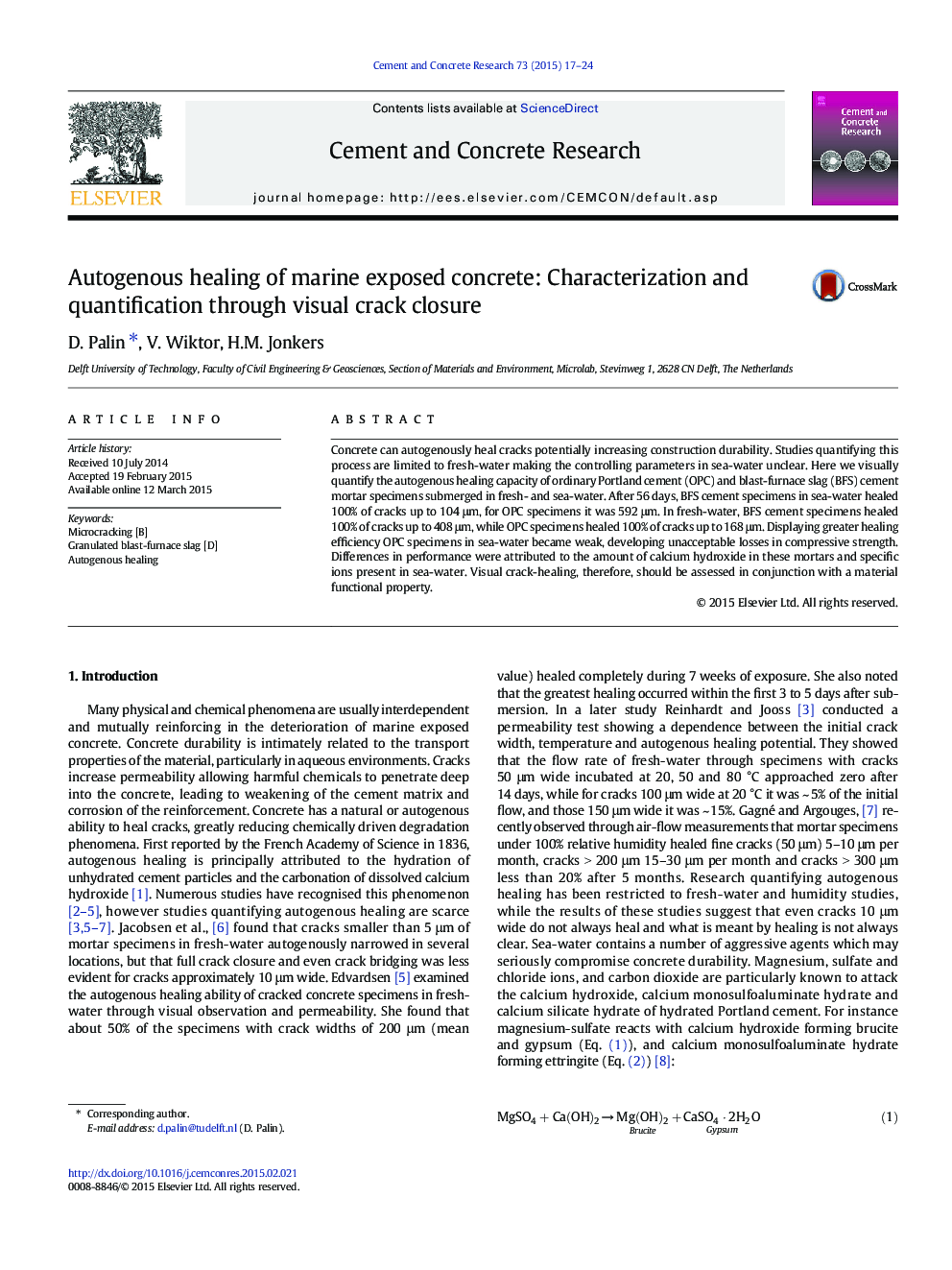| Article ID | Journal | Published Year | Pages | File Type |
|---|---|---|---|---|
| 1456130 | Cement and Concrete Research | 2015 | 8 Pages |
Concrete can autogenously heal cracks potentially increasing construction durability. Studies quantifying this process are limited to fresh-water making the controlling parameters in sea-water unclear. Here we visually quantify the autogenous healing capacity of ordinary Portland cement (OPC) and blast-furnace slag (BFS) cement mortar specimens submerged in fresh- and sea-water. After 56 days, BFS cement specimens in sea-water healed 100% of cracks up to 104 μm, for OPC specimens it was 592 μm. In fresh-water, BFS cement specimens healed 100% of cracks up to 408 μm, while OPC specimens healed 100% of cracks up to 168 μm. Displaying greater healing efficiency OPC specimens in sea-water became weak, developing unacceptable losses in compressive strength. Differences in performance were attributed to the amount of calcium hydroxide in these mortars and specific ions present in sea-water. Visual crack-healing, therefore, should be assessed in conjunction with a material functional property.
